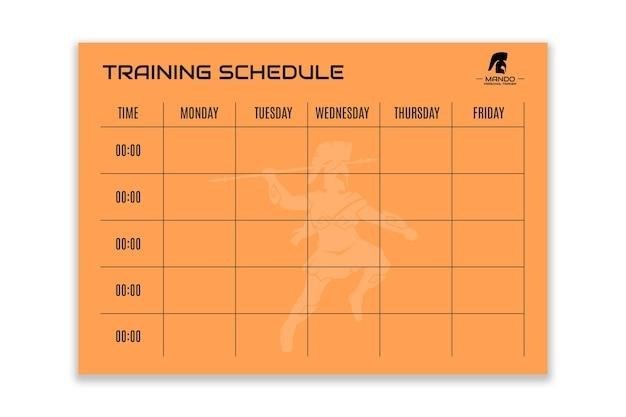This comprehensive guide provides downloadable PDFs and online calculators for accurate superheat and subcooling calculations. Learn manual measurement methods and troubleshooting techniques for optimal HVAC/R system performance and efficiency.
Understanding Superheat and Subcooling
Superheat and subcooling are crucial parameters in refrigeration and air conditioning systems‚ reflecting the thermodynamic state of the refrigerant. Superheat refers to the temperature difference between the refrigerant vapor’s actual temperature and its saturation temperature at a given pressure. It indicates how much the refrigerant has been heated beyond its boiling point‚ ensuring only vapor enters the compressor‚ preventing liquid slugging and damage. Subcooling‚ conversely‚ represents the temperature difference between the refrigerant liquid’s actual temperature and its saturation temperature at a given pressure. It signifies how much the refrigerant has been cooled below its condensing point‚ ensuring only liquid enters the expansion valve‚ maximizing cooling capacity. Both measurements‚ expressed in degrees Fahrenheit or Celsius‚ are essential for assessing system performance‚ diagnosing issues‚ and optimizing refrigerant charge. Understanding these concepts is fundamental for HVAC/R technicians to maintain efficient and reliable system operation.

Measuring Superheat
Measuring superheat involves determining the temperature difference between the refrigerant vapor’s actual temperature and its saturation temperature at the suction line. First‚ connect a pressure gauge to the low-side service valve and allow the system to stabilize. Record the pressure reading. Using a pressure-temperature (P/T) chart or refrigerant app for the specific refrigerant‚ find the corresponding saturation temperature for the measured pressure. Next‚ using a clamp-on thermocouple‚ measure the actual temperature of the refrigerant vapor on the suction line near the compressor. Ensure proper contact and insulation to obtain an accurate reading. Finally‚ subtract the saturation temperature from the measured vapor temperature. The result is the superheat value. For instance‚ if the measured vapor temperature is 70°F and the saturation temperature is 60°F‚ the superheat is 10°F. Accurate superheat measurement is essential for proper system diagnosis and refrigerant charge adjustment.
Measuring Subcooling
Measuring subcooling involves determining the temperature difference between the refrigerant liquid’s actual temperature and its saturation temperature at the condenser outlet. Begin by connecting a pressure gauge to the high-side service valve and allow the system to stabilize. Record the pressure reading. Using a pressure-temperature (P/T) chart or refrigerant app for the specific refrigerant‚ find the corresponding saturation temperature for this pressure. Next‚ using a clamp-on thermocouple‚ measure the actual temperature of the refrigerant liquid on the liquid line near the condenser outlet. Ensure proper contact and insulation for an accurate reading. Finally‚ subtract the measured liquid temperature from the saturation temperature. This difference represents the subcooling value. For example‚ if the saturation temperature is 120°F and the measured liquid temperature is 110°F‚ the subcooling is 10°F. Accurate subcooling measurement is crucial for proper system diagnosis and refrigerant charge assessment.
Calculating Superheat
Calculating superheat involves determining the temperature difference between the refrigerant vapor’s actual temperature and its saturation temperature at the evaporator outlet. First‚ connect a pressure gauge to the low-side service valve and let the system stabilize. Record the pressure reading. Using a pressure-temperature (P/T) chart or a refrigerant app specific to the system’s refrigerant‚ find the corresponding saturation temperature for this pressure. Next‚ using a clamp-on thermocouple‚ measure the actual temperature of the refrigerant vapor on the suction line near the evaporator outlet. Ensure good contact and insulation for accuracy. Finally‚ subtract the saturation temperature from the measured vapor temperature. This difference is the superheat value. For instance‚ if the measured vapor temperature is 60°F and the saturation temperature is 50°F‚ the superheat is 10°F. Accurate superheat calculation is essential for system performance analysis and refrigerant charge verification.
Calculating Subcooling
Calculating subcooling involves finding the temperature difference between the refrigerant liquid’s actual temperature and its saturation temperature at the condenser outlet. Begin by connecting a pressure gauge to the high-side service valve‚ allowing the system to stabilize. Record the pressure reading. Using a pressure-temperature (P/T) chart or a refrigerant app for the specific refrigerant in the system‚ determine the corresponding saturation temperature for the recorded high-side pressure. Next‚ using a clamp-on thermocouple‚ measure the actual temperature of the refrigerant liquid on the liquid line near the condenser outlet. Ensure proper contact and insulation to minimize heat transfer. Finally‚ subtract the measured liquid temperature from the saturation temperature obtained from the P/T chart or app. This resulting difference represents the subcooling value. For example‚ if the saturation temperature is 100°F and the measured liquid temperature is 90°F‚ the subcooling is 10°F. Accurate subcooling calculation is crucial for system performance evaluation and refrigerant charge assessment.
Using Superheat and Subcooling for Troubleshooting
Superheat and subcooling measurements are valuable diagnostic tools for identifying various HVAC/R system problems. Low superheat can indicate a flooded evaporator‚ potentially leading to compressor damage‚ while high superheat suggests a restricted refrigerant flow or low refrigerant charge. Similarly‚ low subcooling can point to a faulty condenser fan‚ non-condensables in the system‚ or an overcharge of refrigerant. Conversely‚ high subcooling may signify a restricted metering device or a low refrigerant charge. By comparing measured superheat and subcooling values to the manufacturer’s specifications‚ technicians can pinpoint the root cause of performance issues. For instance‚ if both superheat and subcooling are low‚ it often suggests an overcharge of refrigerant. If both readings are high‚ it may indicate a low refrigerant charge. Using these measurements in conjunction with other diagnostic techniques provides a comprehensive approach to troubleshooting and ensures efficient system operation. Proper interpretation of superheat and subcooling data is essential for accurate diagnosis and effective repairs.
Superheat and Subcooling Charts and Calculators
Numerous resources are available to assist technicians in determining target superheat and subcooling values and performing calculations. Refrigerant manufacturers often provide charts and tables specifying the recommended superheat and subcooling ranges for different refrigerants and operating conditions. These resources are crucial for accurate system diagnosis and charging. Additionally‚ various online calculators simplify the process of determining target superheat and subcooling based on factors like indoor and outdoor temperatures. These calculators automate the calculations‚ reducing the risk of errors and saving valuable time. Furthermore‚ some digital refrigerant gauges incorporate built-in superheat and subcooling calculators‚ streamlining the measurement and diagnostic process. These advanced tools offer convenience and precision for HVAC/R technicians. Utilizing these readily available charts‚ calculators‚ and advanced tools ensures accurate measurements and efficient system operation.

Refrigerant Considerations
Different refrigerants have unique thermodynamic properties‚ impacting superheat and subcooling calculations. For instance‚ R-22‚ a common refrigerant in older systems‚ has different pressure-temperature relationships compared to newer refrigerants like R-410A. Consequently‚ technicians must consult refrigerant-specific pressure-temperature charts or utilize electronic tools programmed with the appropriate data for accurate measurements. Furthermore‚ the type of refrigerant blend‚ whether azeotropic or zeotropic‚ influences the calculation process. Zeotropic blends‚ with varying boiling points‚ require specialized calculations considering the dew point and bubble point temperatures. Understanding these nuances is crucial for accurate charging and system performance. Overcharging or undercharging can lead to inefficiency‚ component damage‚ and reduced system lifespan. Therefore‚ considering the specific refrigerant characteristics is paramount for effective HVAC/R system maintenance and troubleshooting.
Practical Applications in HVAC/R Systems
Superheat and subcooling calculations are essential for diagnosing and optimizing HVAC/R system performance. Technicians use these measurements to determine refrigerant charge accuracy‚ identify potential leaks‚ and assess component functionality. For example‚ high superheat can indicate a restricted refrigerant flow‚ a low refrigerant charge‚ or a malfunctioning metering device. Conversely‚ low superheat may suggest a flooded evaporator or an overcharged system. Similarly‚ abnormal subcooling values can pinpoint issues within the condenser or metering device. By analyzing these measurements‚ technicians can pinpoint the root cause of system malfunctions‚ preventing costly repairs and ensuring efficient operation. Moreover‚ proper superheat and subcooling settings contribute to energy efficiency‚ extending the lifespan of HVAC/R equipment and minimizing environmental impact. These practical applications highlight the importance of understanding and utilizing these calculations in everyday HVAC/R maintenance and troubleshooting procedures.
Importance of Accurate Measurements
Accurate superheat and subcooling measurements are crucial for the efficient and reliable operation of HVAC/R systems. Precise readings enable technicians to diagnose problems effectively‚ optimize system performance‚ and prevent costly repairs. Inaccurate measurements can lead to misdiagnosis‚ improper refrigerant charging‚ and reduced system efficiency. This can result in increased energy consumption‚ premature component failure‚ and compromised comfort. Furthermore‚ accurate measurements are essential for ensuring the longevity of the system. By maintaining proper superheat and subcooling levels‚ technicians can prevent liquid refrigerant from entering the compressor‚ a major cause of compressor damage. Accurate measurements also help in identifying refrigerant leaks‚ allowing for timely repairs and minimizing environmental impact. Therefore‚ investing in proper measurement tools and techniques is essential for maximizing system performance‚ reducing operating costs‚ and ensuring the long-term health of HVAC/R equipment.



